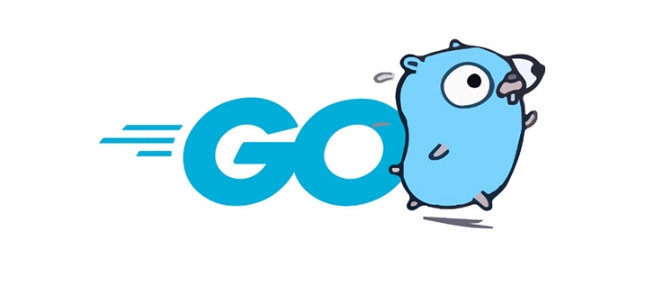Go offers faster execution speed due to compilation to native machine code, outperforming interpreted languages like Python in tasks such as serving HTTP requests. 2. Its efficient concurrency model using lightweight goroutines enables thousands of concurrent operations with low memory and context-switching overhead compared to traditional threading. 3. Go has lower memory usage and faster startup times because it produces self-contained binaries without needing a heavy runtime, making it ideal for serverless and containerized environments. 4. Built-in performance tools like pprof, benchmarks, and a race detector allow developers to easily profile, test, and optimize code. 5. Go excels in network and I/O-bound tasks thanks to its optimized standard library and runtime-managed non-blocking I/O, providing high throughput for APIs and distributed systems. Switching to Go delivers the most performance benefits when building scalable microservices, CLI tools, distributed systems, or replacing slow scripts, resulting in measurable improvements in speed, efficiency, and reliability where low latency and high concurrency are critical.

Switching to Go (Golang) can bring significant performance improvements in many real-world scenarios, especially when compared to higher-level or interpreted languages like Python, Ruby, or even Node.js. While Go isn't always the best choice for every use case, its design prioritizes efficiency, concurrency, and fast execution—making it a strong contender for backend services, APIs, and distributed systems.

Here are the key performance benefits you can expect when switching to Go:
1. Faster Execution Speed
Go is a compiled language that produces native binaries. Unlike interpreted languages (e.g., Python), Go code is compiled directly to machine code, which results in much faster execution.

- Example: A simple HTTP server in Go can handle thousands of requests per second with minimal latency, while a similar Python Flask app might struggle under the same load without additional optimization (e.g., using async or Gunicorn with multiple workers).
- Go’s performance is often close to that of C or C , but without the complexity.
This makes Go ideal for CPU-intensive tasks, microservices, and systems where low latency is critical.
2. Efficient Concurrency with Goroutines
One of Go’s standout features is its built-in support for lightweight concurrency via goroutines and channels.

- Goroutines are functions that run concurrently and are much cheaper than OS threads (only a few KB of stack space).
- Thousands—or even millions—of goroutines can run efficiently on a single machine.
- The Go runtime schedules goroutines across CPU cores automatically.
go fetchData(url) // starts a goroutine with minimal overhead
Compared to thread-based models (like in Java or Python), Go’s concurrency model reduces memory usage and context-switching overhead, leading to better throughput and scalability.
3. Lower Memory Usage and Faster Startup Time
Go binaries are self-contained and don’t require a heavy runtime or VM (unlike Java’s JVM or .NET’s CLR). This leads to:
- Lower memory footprint per process
- Faster cold starts, which is crucial in serverless environments (e.g., AWS Lambda)
- Predictable performance without garbage collection pauses (though Go does have a GC, it’s optimized for low latency)
This makes Go a top choice for cloud-native applications and containerized environments where resource efficiency matters.
4. Built-in Performance Tools
Go comes with excellent tooling out of the box for profiling and optimizing performance:
-
go tool pprof– for CPU and memory profiling - Built-in benchmarks (
go test -bench=.) - Race detector (
-raceflag) to catch concurrency bugs
These tools help developers identify bottlenecks early and optimize code effectively—without needing third-party libraries.
5. High Performance in Network and I/O-Bound Tasks
Go’s net/http package and standard library are optimized for high-performance networking.
- The
httpserver is production-ready without external dependencies - Non-blocking I/O is handled efficiently by the runtime
- Ideal for building fast REST APIs, proxies, or real-time services
Compared to Node.js (which is also good at I/O), Go often delivers better CPU-bound performance and more predictable behavior under load.
When the Performance Gains Matter Most
Switching to Go tends to pay off the most in these scenarios:
- Building microservices or API backends that need to scale
- Writing CLI tools that must start quickly and run efficiently
- Developing distributed systems requiring high concurrency
- Replacing slow scripts (e.g., Python) in performance-critical paths
However, for simple scripts or I/O-light applications, the performance gains may not justify the switch.
Basically, Go gives you near-C performance with much simpler concurrency and a clean syntax. It’s not magic—but for backend systems where speed, scalability, and reliability matter, the performance benefits are real and measurable.
The above is the detailed content of Performance benefits of switching to Go. For more information, please follow other related articles on the PHP Chinese website!

Hot AI Tools

Undress AI Tool
Undress images for free

Undresser.AI Undress
AI-powered app for creating realistic nude photos

AI Clothes Remover
Online AI tool for removing clothes from photos.

Clothoff.io
AI clothes remover

Video Face Swap
Swap faces in any video effortlessly with our completely free AI face swap tool!

Hot Article

Hot Tools

Notepad++7.3.1
Easy-to-use and free code editor

SublimeText3 Chinese version
Chinese version, very easy to use

Zend Studio 13.0.1
Powerful PHP integrated development environment

Dreamweaver CS6
Visual web development tools

SublimeText3 Mac version
God-level code editing software (SublimeText3)

Hot Topics
 How does the switch statement work in Go?
Jul 30, 2025 am 05:11 AM
How does the switch statement work in Go?
Jul 30, 2025 am 05:11 AM
Go's switch statement will not be executed throughout the process by default and will automatically exit after matching the first condition. 1. Switch starts with a keyword and can carry one or no value; 2. Case matches from top to bottom in order, only the first match is run; 3. Multiple conditions can be listed by commas to match the same case; 4. There is no need to manually add break, but can be forced through; 5.default is used for unmatched cases, usually placed at the end.
 How to use reflection in Go?
Jul 28, 2025 am 12:26 AM
How to use reflection in Go?
Jul 28, 2025 am 12:26 AM
Usereflect.ValueOfandreflect.TypeOftogetruntimevaluesandtypes;2.Inspecttypedetailswithreflect.TypemethodslikeName()andKind();3.Modifyvaluesviareflect.Value.Elem()andCanSet()afterpassingapointer;4.CallmethodsdynamicallyusingMethodByName()andCall();5.R
 how to break from a nested loop in go
Jul 29, 2025 am 01:58 AM
how to break from a nested loop in go
Jul 29, 2025 am 01:58 AM
In Go, to break out of nested loops, you should use labeled break statements or return through functions; 1. Use labeled break: Place the tag before the outer loop, such as OuterLoop:for{...}, use breakOuterLoop in the inner loop to directly exit the outer loop; 2. Put the nested loop into the function, and return in advance when the conditions are met, thereby terminating all loops; 3. Avoid using flag variables or goto, the former is lengthy and easy to make mistakes, and the latter is not recommended; the correct way is that the tag must be before the loop rather than after it, which is the idiomatic way to break out of multi-layer loops in Go.
 Windows Photos app is slow to open
Jul 28, 2025 am 03:00 AM
Windows Photos app is slow to open
Jul 28, 2025 am 03:00 AM
The slow opening of Windows Photos app can be solved by the following methods: 1. Clean the cache and enter the specified folder to delete content to improve startup speed; 2. Reduce the loading of the album, and reduce the amount of data by moving photos or setting filters; 3. Turn off OneDrive automatic synchronization to avoid slow startup of cloud connections; 4. Update the system and applications to fix potential bugs. The above method is simple to operate and has obvious effects, and is suitable for most cases of slow startup caused by cache, file number or synchronization problems.
 How to handle timeouts in Go?
Jul 27, 2025 am 03:44 AM
How to handle timeouts in Go?
Jul 27, 2025 am 03:44 AM
Usecontext.WithTimeouttocreateacancellablecontextwithadeadlineandalwayscallcancel()toreleaseresources.2.ForHTTPrequests,settimeoutsusinghttp.Client.Timeoutorusecontextviahttp.NewRequestWithContextforper-requestcontrol.3.Ingoroutineswithchannels,usese
 Using the Context Package in Go for Cancellation and Timeouts
Jul 29, 2025 am 04:08 AM
Using the Context Package in Go for Cancellation and Timeouts
Jul 29, 2025 am 04:08 AM
Usecontexttopropagatecancellationanddeadlinesacrossgoroutines,enablingcooperativecancellationinHTTPservers,backgroundtasks,andchainedcalls.2.Withcontext.WithCancel(),createacancellablecontextandcallcancel()tosignaltermination,alwaysdeferringcancel()t
 Efficient JSON Parsing and Manipulation in Go
Jul 27, 2025 am 03:55 AM
Efficient JSON Parsing and Manipulation in Go
Jul 27, 2025 am 03:55 AM
UsestructswithPERJSontagsFeRpredictabledatoensurefast, safeparsingwithcompile-timetypesafety.2.avoidmap [string] interface {string] interface {string] interface {string] interface {string] interface {string] interface {string] interface {string] interface {string] interface {string] interface {string] interface {string] interface {string] interface {string] interface {string] interface {string] interface {string] interface {string] interface {string] interface {string] interface {string] interface {string] interface {string] interface {string] interface {string] interface {string] interface {string] interface {string] interface {string] }duetoreflectionoverheadandruntimetypeassertionsunlessdealingwithtrulydynamicJSON.3.Usejson.RawMessagefordeferredorselectivep
 Building a GraphQL Server in Go
Jul 28, 2025 am 02:10 AM
Building a GraphQL Server in Go
Jul 28, 2025 am 02:10 AM
InitializeaGomodulewithgomodinit,2.InstallgqlgenCLI,3.Defineaschemainschema.graphqls,4.Rungqlgeninittogeneratemodelsandresolvers,5.Implementresolverfunctionsforqueriesandmutations,6.SetupanHTTPserverusingthegeneratedschema,and7.RuntheservertoaccessGr






